San Antonio is a unique city in Texas, with a rich Hispanic and American culture. You won’t ever be bored when visiting this city as there are hundreds of historic sites and beautiful hiking trails to see. But what about fishing or going for a swim to cool off and beat the summer heat? Well, take a look:
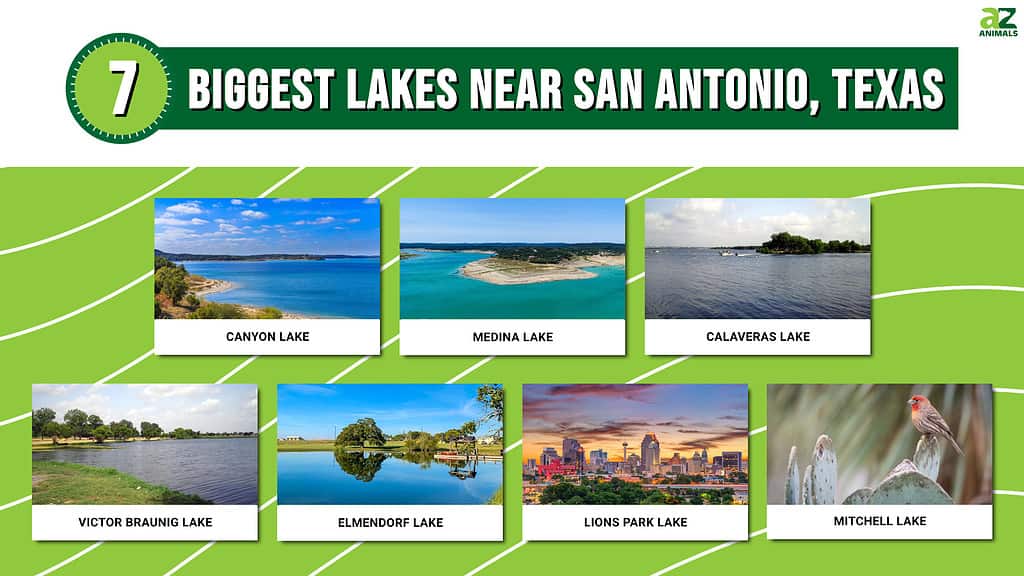
There are multiple lakes near San Antonio, Texas, for plenty of recreational fun. Keep reading to discover the biggest lakes near San Antonio. Some of these lakes require a drive, but it is well worth it!
1. Canyon Lake
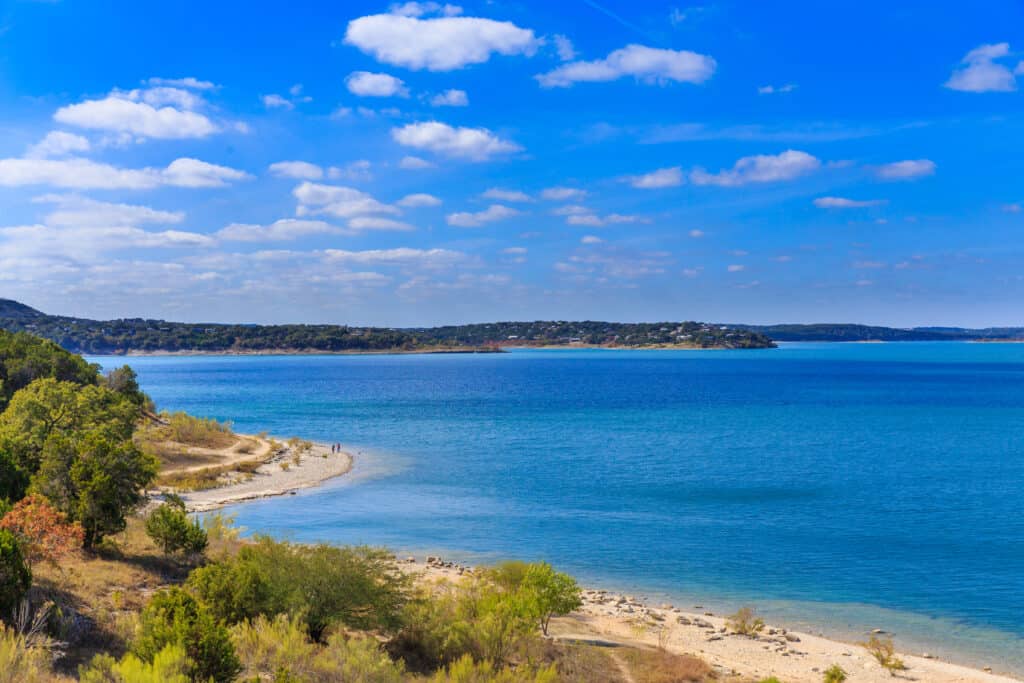
Canyon Lake has a surface area of 8,230 acres.
©Tricia Daniel/Shutterstock.com
Canyon Lake has a surface area of 8,230 acres and a water volume of 382,000 acre-feet. The lake’s deepest point is 134 feet. The U.S. Army Corps of Engineers dammed the Guadalupe River in Comal County by Canyon Dam. The reservoir’s purpose is for flood control and as a water supply for communities near the dam. While it was first created as a flood control reservoir, Canyon Lake offers water activities like boating, swimming, camping, and fishing along the 80 miles of shore. Popular equestrian trails are available next to the lake.
2. Medina Lake
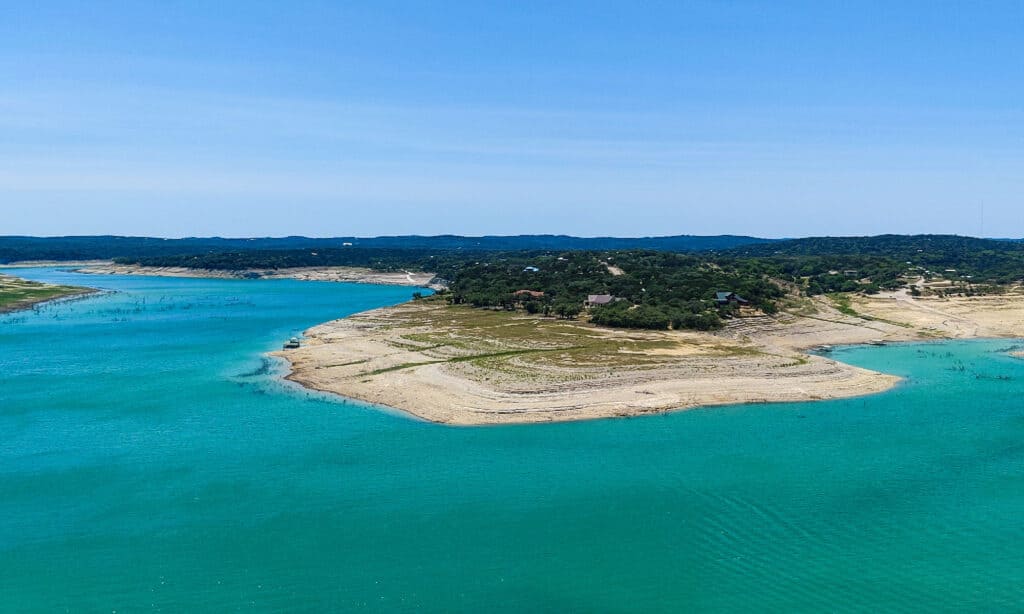
Medina Lake is a popular fishing destination for common carp, white bass, striped bass, and catfish.
©Mia GiAngelos/Shutterstock.com
Medina Lake is a 6,060-acre lake in Medina and Bandera county. It takes a little less than an hour to drive from San Antonio to Medina Lake. This large lake offers 110 miles of shore with access to dozens of hiking trails. The Bexar/Medina/Atascosa County Agricultural District operates the lake. The project that created the lake was completed in 1916, over a century ago. Medina Lake is a popular fishing destination for common carp, white bass, striped bass, and catfish. It’s also crescent-shaped, with its deepest point measuring 152 feet.
3. Calaveras Lake

Calaveras Lake acts as a cooling pond for multiple dams in the area.
©Karen Fasimpaur, Public domain, via Wikimedia Commons – License
Just 20 miles away from downtown San Antonio is Calaveras Lake in Bexar County, Texas. It acts as a cooling pond for multiple dams in the area. This 3,695-acre lake is frequently stocked with red drum, largemouth bass, and hybrid striped bass for recreational fishing. Calaveras Lake sits at an elevation of 485 feet with a maximum depth of 45 feet. Other than fishing, you can also sail, water ski, canoe, and kayak in the lake.
4. Victor Braunig Lake
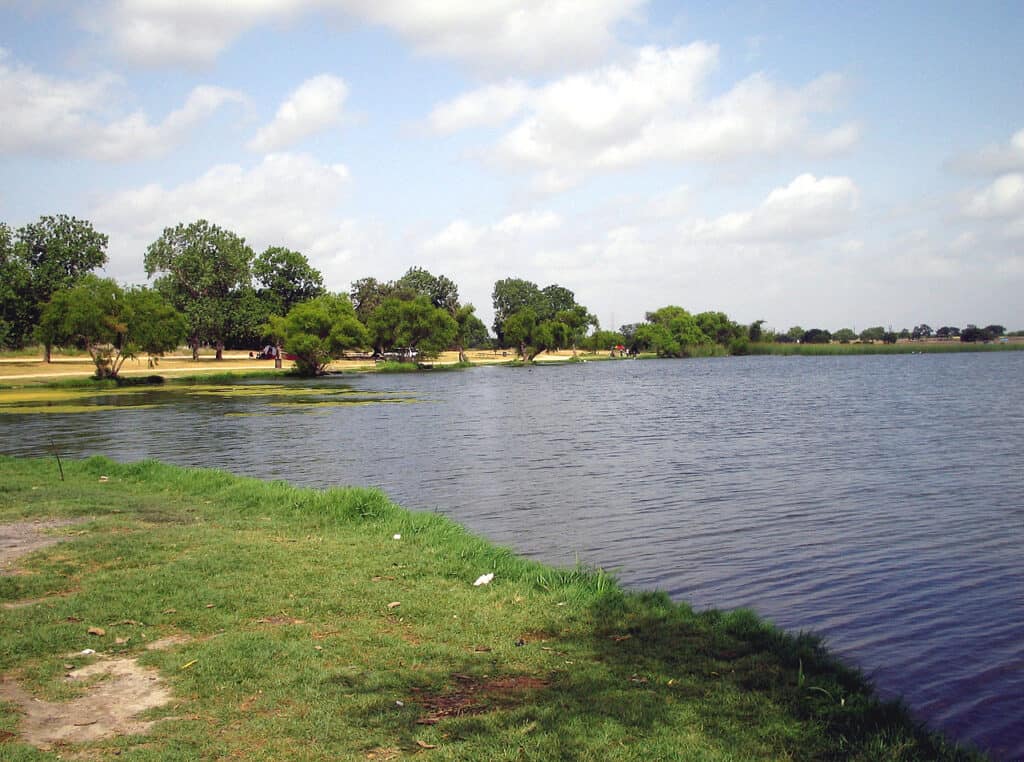
Victor Braunig Lake is a public lake and park.
©Karen Fasimpaur / public domain – License
Victor Braunig Lake is a public lake and park. Swimming is not allowed, but you can camp, hike, picnic, sail, and fish. This lake has a surface area of 1,350 acres and a water volume of 26,500 acre-feet. Parts of the lake are filled with treated wastewater. A small nature trail takes you around the lake. If you are lucky, you might be able to spot beautiful birds, including ospreys and herons. It is not an extremely popular lake or park, which is perfect if you are looking for a quiet and relaxing spot to fish and enjoy nature.
5. Elmendorf Lake

Elmendorf Lake is calm, with multiple concrete trails around the lake.
©Rachel Staggs/Shutterstock.com
Elmendorf Lake is a lake in San Antonio, Texas, surrounded by a public park. This beautiful lake is calm, with multiple concrete trails around the lake. It is a great family-friendly destination with a surface area of 687 acres. It is a hidden gem for locals, with multiple bridges and large shady trees. You can visit Elmendorf Lake at night as it is lively and full of light. Visitors cannot swim in Elmendorf Lake, but they can fish for largemouth bass and bluegill.
6. Lions Park Lake

San Antonio, the 7th largest city in the US, has a number of city lakes, like Lions Park, for local enjoyment.
©Sean Pavone/Shutterstock.com
Lions Park Lake, in Southside Lions Park, is an urban fishing destination in San Antonio. You can easily catch catfish in this lake. Surrounding the lake is a colorful playground for children and multiple concrete nature trails. It is also a wonderful spot for waterfowl and bird watching as there is a large population of geese, ducks, and egrets. It is a beautiful spot to walk in Autumn as the leaves change and the temperature cools down.
7. Mitchell Lake
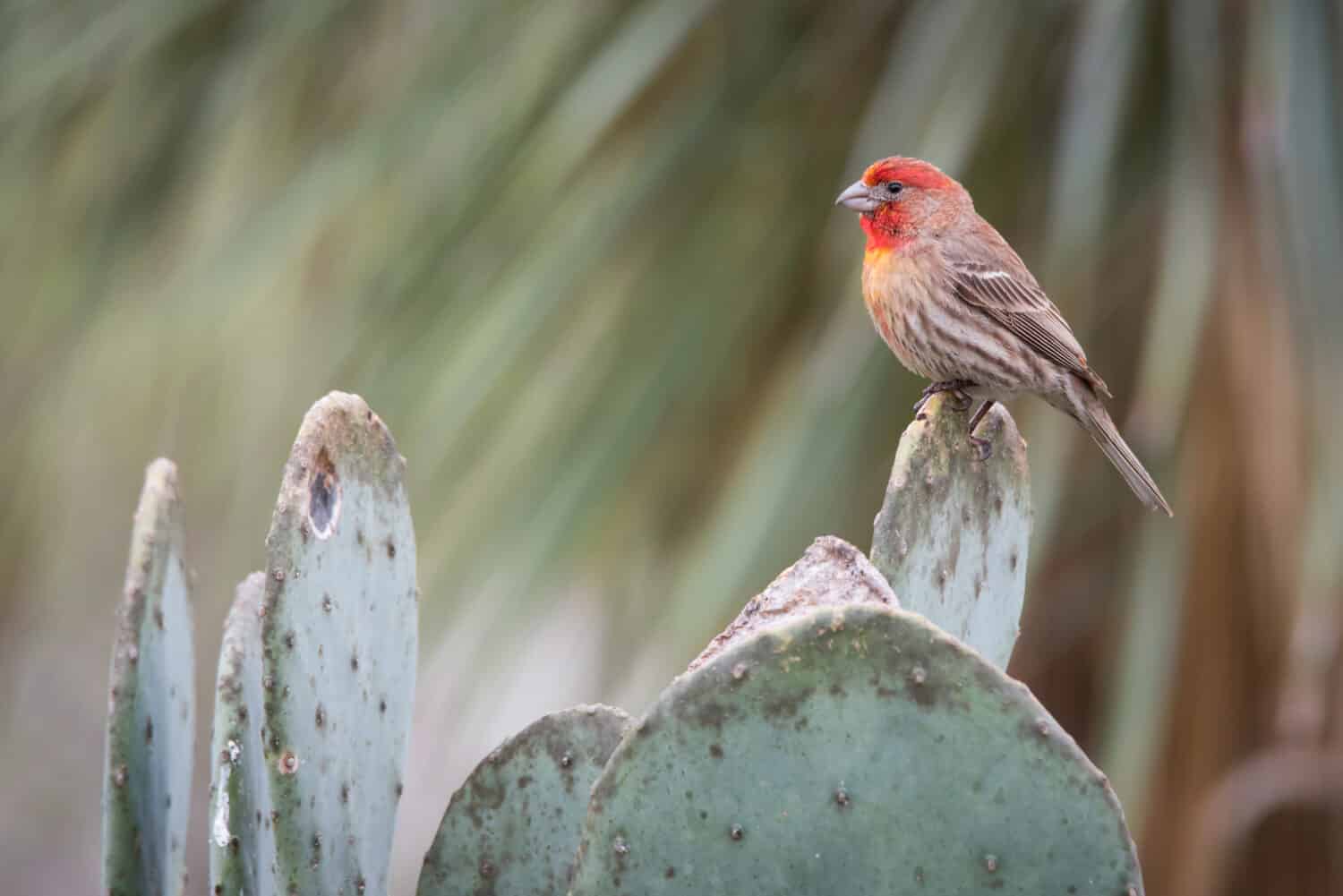
A
House Finch
perched atop a cactus at the Mitchell Lake Audubon Center near San Antonio, Texas.
©Puffin’s Pictures/Shutterstock.com
Mitchell Lake is a lot smaller than the lakes on this list, but it is directly in San Antonio, perfect for residents. It is a 600-acre lake that was a waste control reservoir. Now, the lake is primarily used as a birdwatching spot as it attracts multiple species, including ducks, geese, American white pelicans, and northern cardinals. Mitchell Lake is also part of the Mitchell Lake Audubon Center, with multiple dirt path nature trails.
Summary of 7 Biggest Lakes Near San Antonio Texas
| Rank | Lake | Size |
|---|---|---|
| 1 | Canyon Lake | 8,230 Acres |
| 2 | Medina Lake | 6,060 Acres |
| 3 | Calaveras Lake | 3,695 Acres |
| 4 | Victor Braunig Lake | 1,350 Acres |
| 5 | Elmendorf Lake | 687 Acres |
| 6 | Lions Park Lake | 600 Acres |
| 7 | Mitchell Lake | 600 Acres |
The photo featured at the top of this post is © Jason Squyres/Shutterstock.com
Thank you for reading! Have some feedback for us? Contact the AZ Animals editorial team.






